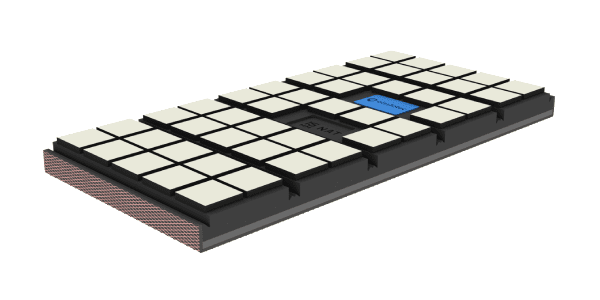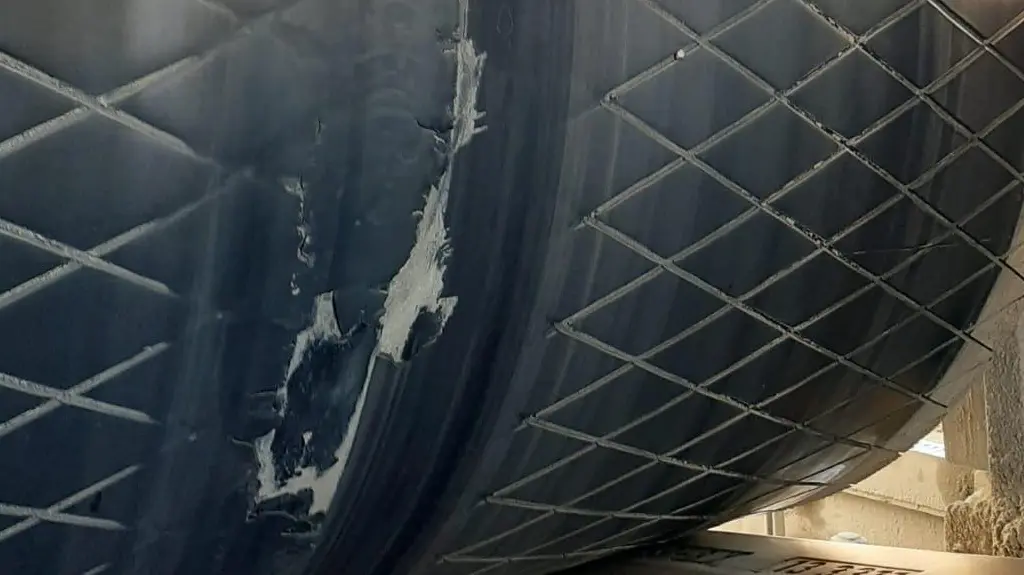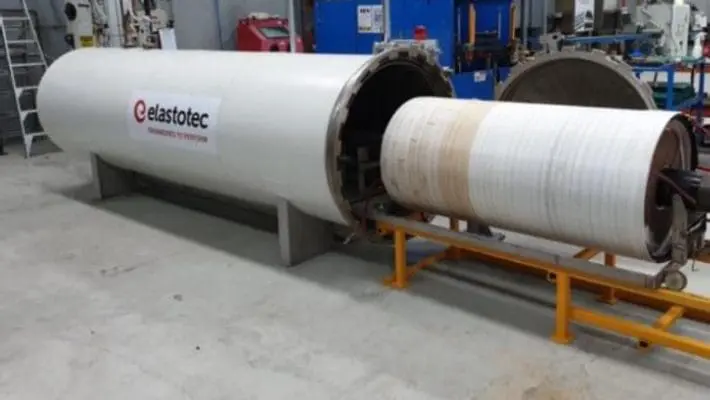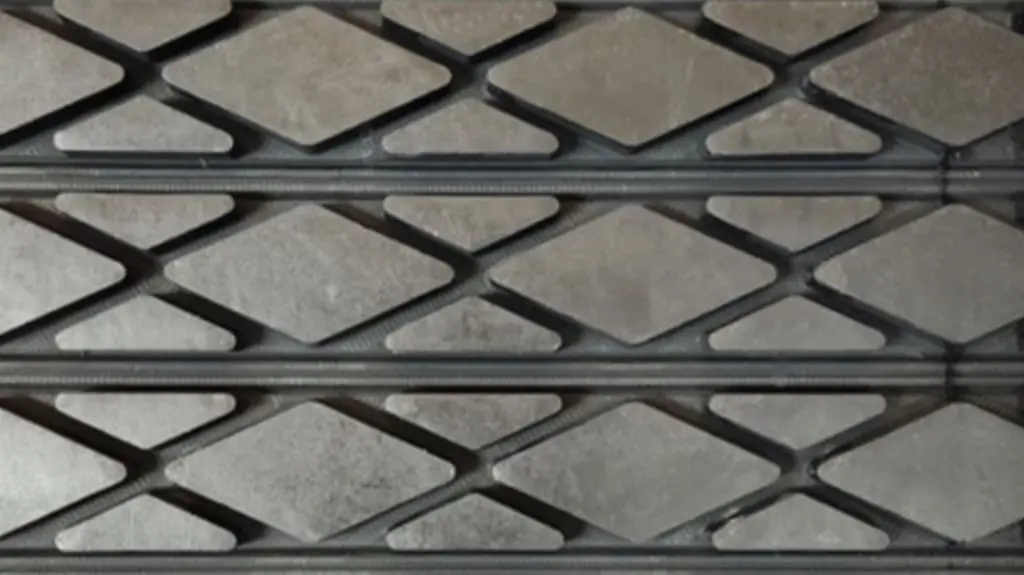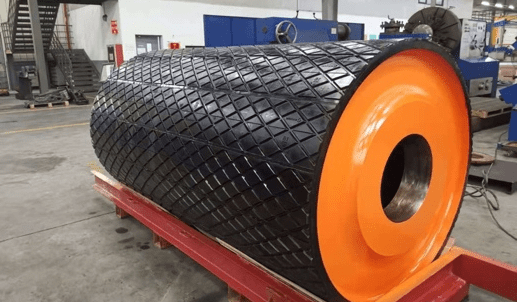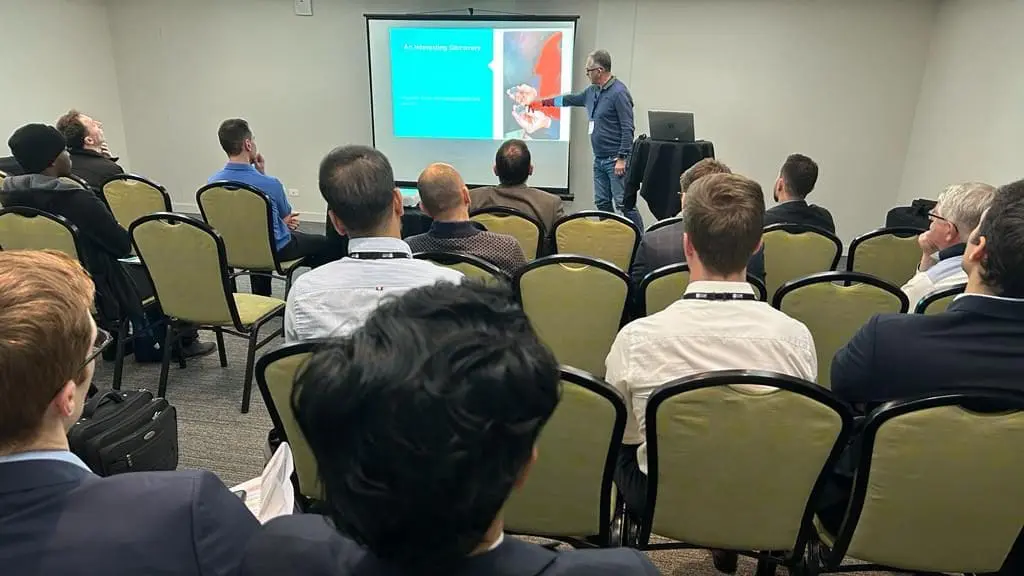Elastotec Direct Bond Adhesive - Part B – Material Safety Data Sheet
| Date prepared: | 16/04/2019 | Reasons for issue: | Review |
| Date last reviewed: | 04/05/2021 | Next review: | 04/05/2026 |
| Manufacture/Importer Details | |||
| Business name | Elastotec P/L | ABN | 65 137 437 239 |
| Telephone | +61 2 8987 1922 | ||
| Address | Unit 1 / 61 Somersby Falls Road, Somersby NSW 2250 Australia | ||
| Emergency Contact | |||
| Business name | Elastotec P/L | Telephone | As above or after hours +61 423 200 178 |
| david@elastotec.com.au | |||
Section 1: Product Identification
| Product: | Elastotec DBA – Part B (Use in conjunction with Elastotec DBA – Part A) |
|---|---|
| Classification: | Hazardous according to criteria of Worksafe Australia. |
| Recommended use: | Adhesive for Direct Bond Ceramic Lagging and wear lining |
Section 2: Hazards Identification
| Signal Word | Danger | ||||||
|---|---|---|---|---|---|---|---|
| This material is hazardous according to health criteria of Safe Work Australia. | |||||||
| Signal Word: | Danger | ||||||
| Hazard Classifications: | Skin Corrosion/Irritation – Category 2 Serious Eye Damage/Irritation – Category 1 Sensitisation – Skin – Category 1A | ||||||
| Hazard Statements | ||
|---|---|---|
| H315 | Causes skin irritation. | |
| H317 | May cause an allergic skin reaction. | |
| H318 | Causes serious eye damage. | |
| H411 | Toxic to aquatic life with long lasting effects. | |
| Prevention Precautionary Statements | ||
|---|---|---|
| P261 | Avoid breathing dust, fume, gas, mist, vapours or spray | |
| P264 | Wash hands, face and all exposed skin thoroughly after handling. | |
| P272 | Contaminated work clothing should not be allowed out of the workplace. | |
| P280 | Wear protective clothing, gloves, eye/face protection and suitable respirator. | |
| P302 + P352 | IF ON SKIN: Wash with plenty of soap and water. | |
| P305 + P351 + P338 | IF IN EYES: Rinse cautiously with water for several minutes. Remove contact lenses, if present and easy to do. Continue rinsing. | |
| P310 | Immediately call a POISON CENTER or doctor/physician. | |
| P321 | Specific treatment (see supplemental first aid instructions on this product label). | |
| P333 + P313 | If skin irritation or rash occurs: Get medical advice/attention. | |
| P362 | Take off contaminated clothing and wash before reuse. | |
| Storage Precautionary Statement | Not allocated | |
| Disposal Precautionary Statement | ||
| Not classified as Dangerous Goods by the criteria of the “Australian Code for the Transport of Dangerous Goods by Road & Rail” and the “New Zealand NZS5433: Transport of Dangerous Goods on Land”. | ||
| Dangerous Good Classification | ||
| P501 | Dispose of contents/container in accordance with local, regional, national and international regulations. | |
| Poison Schedule | S5 Caution | |
Section 3: Composition Information
| Chemical Entity | Cas No. | Proportion |
|---|---|---|
| Fatty acids, C18-unsaturated, dimers, reaction products with polyethylenepolyamines | 68410-23-1 | >60% |
| Ingredients determined to be Non-Hazardous | Balance |
Section 4: First Aid Measures
| First Aid | Measure |
|---|---|
| If poisoning occurs, contact a doctor or Poisons Information Centre. (Phone Australia 131 126, New Zealand 0800 764 766). | |
| Inhalation: | Remove victim from exposure – avoid becoming a casualty. Remove contaminated clothing and loosen remaining clothing. Allow patient to assume most comfortable position and keep warm. Keep at rest until fully recovered. Seek medical advice if effects persist. |
| Skin Contact: | Effects may be delayed. If skin or hair contact occurs, immediately remove contaminated clothing and flush skin and hair with running water. Continue flushing with water until advised to stop by the Poisons Information Centre or a Doctor; or for 15 minutes and transport to Doctor or Hospital. |
| Eye Contact: | Immediately irrigate with copious quantities of water for 15 minutes. Eyelids to be held open. Remove clothing if contaminated and wash skin. Urgently seek medical assistance. Transport to hospital or medical centre. |
| Ingestion: | Rinse mouth with water. If swallowed, do NOT induce vomiting. Give a glass of water to drink. Never give anything by the mouth to an unconscious patient. If vomiting occurs give further water. Seek medical advice. |
| Notes to Physician: | Treat symptomatically. Effects may be delayed. Can cause corneal burns. |
Section 5: Fire Fighting Measures
| First Aid | Measure |
|---|---|
| Hazchem Code: | Not applicable. |
| Suitable Extinguishing Media: | If material is involved in a fire use water fog (or if unavailable fine water spray), alcohol resistant foam, standard foam, dry agent (carbon dioxide, dry chemical powder). |
| Specific Hazards: | Non-combustible material. |
| Fire Fighting Further Advice: | Not applicable |
Section 6: Accidental Release Measures
| First Aid | Measure |
|---|---|
| Small Spills: | Wear protective equipment to prevent skin and eye contamination. Avoid inhalation of vapours or dust. Wipe up with absorbent (clean rag or paper towels). Collect and seal in properly labelled containers or drums for disposal. |
| Large Spills: | Clear area of all unprotected personnel. Slippery when spilt. Avoid accidents, clean up immediately. Wear protective equipment to prevent skin and eye contamination and the inhalation of dust. Work up wind or increase ventilation. Cover with damp absorbent (inert material, sand or soil). Sweep or vacuum up, but avoid generating dust. Collect and seal in properly labelled containers or drums for disposal.If contamination of crops, sewers or waterways has occurred advise local emergency services. |
| Dangerous Goods – Initial Emergency Response Guide No: | Not applicable |
Section 7: Handling And Storage
| First Aid | Measure |
|---|---|
| Handling: | Avoid eye contact and skin contact. Avoid inhalation of dust. |
| Storage: | Store in a cool, dry, well-ventilated place and out of direct sunlight. Store away from foodstuffs. Store away from incompatible materials described in Section 10. Store away from sources of heat and/or ignition. Keep container standing upright. Keep containers closed when not in use – check regularly for spills. This material is a Scheduled Poison Schedule 5 (Caution) and must be stored, maintained and used in accordance with the relevant regulations. |
Section 8: Exposure Controls & Personal Protection
| First Aid | Measure |
|---|---|
| National Occupational Exposure Limits: | No value assigned for this specific material by Safe Work Australia. |
| Biological Limit Values: | As per the “National Model Regulations for the Control of Workplace Hazardous Substances (Safe Work Australia)” the ingredients in this material do not have a Biological Limit Allocated. |
| National Occupational Exposure Limits: | Natural ventilation should be adequate under normal use conditions. |
| Personal Protection Equipment: | SAFETY SHOES, GLOVES, SAFETY GLASSES. Wear safety shoes, gloves, safety glasses. Available information suggests that gloves made from should be suitable for intermittent contact. However, due to variations in glove construction and local conditions, the user should make a final assessment. Always wash hands before smoking, eating, drinking or using the toilet. Wash contaminated clothing and other protective equipment before storing or re-using. |
| Hygiene Measures: | Keep away from food, drink and animal feeding stuffs. When using do not eat, drink or smoke. Wash hands prior to eating, drinking or smoking. Avoid contact with clothing. Avoid eye contact and skin contact. Avoid inhalation of dust. Ensure that eyewash stations and safety showers are close to the workstation location. |
Section 9: Physical And Chemical Properties
| First Aid | Measure | |
|---|---|---|
| Form: | Gel | |
| Colour: | Pale/Amber | |
| Solubility: | Partially soluble in water | |
| Specific Gravity (20°C): | 0.94–0.98 @ 25°C | |
| Relative Vapour Density (air=1): | >1 | |
| Vapour Pressure (20°C): | <0.01 Pa | |
| Flash Point (°C): | >200°C | |
| Boiling Point/Range (°C): | >200°C | |
| Decomposition Point (°C): | >200°C | |
| Total VOC (g/Litre): | Nil | |
| % Volatile by Volume: | Nil | |
| (Typical values only – consult specification sheet) N Av = Not available, N App = Not applicable | ||
Section 10: Stability And Reactivity
| First Aid | Measure |
|---|---|
| Chemical Stability: | This material is thermally stable when stored and used as directed. |
| Conditions to Avoid: | Elevated temperatures and sources of ignition. |
| Incompatible Materials: | Oxidising agents. |
| Hazardous Decomposition Products: | Oxides of carbon and nitrogen, smoke and other toxic fumes. |
| Hazardous Reactions: | No known hazardous reactions. |
Section 11: Toxicological Information
No adverse health effects expected if the product is handled in accordance with this Safety Data Sheet and the product label.
Symptoms or effects that may arise if the product is mishandled and overexposure occurs are:
| Acute Effects | ||
|---|---|---|
| Inhalation: | Material may be an irritant to mucous membranes and respiratory tract. | |
| Skin Contact: | Contact with skin will result in irritation. A skin sensitiser. Repeated or prolonged skin contact may lead to allergic contact dermatitis. | |
| Ingestion: | Swallowing can result in nausea, vomiting and irritation of the gastrointestinal tract. | |
| Eye Contact: | A severe eye irritant. Corrosive to eyes: contact can cause corneal burns. Contamination of eyes can result in permanent injury. Exposure to the dust may cause discomfort due to particulate nature. May cause physical irritation to the eyes. | |
| Acute Toxicity | ||
|---|---|---|
| Inhalation: | Inhalation: This material has been classified as non-hazardous. Acute toxicity estimate (based on ingredients): >5 mg/L | |
| Skin Contact: | This material has been classified as non-hazardous. Acute toxicity estimate (based on ingredients): >2,000 mg/Kg | |
| Ingestion: | This material has been classified as non-hazardous. Acute toxicity estimate (based on ingredients): >2,000 mg/Kg | |
| Corrosion/Irritancy: | Eye: this material has been classified as a Category 1 Hazard (irreversible effects to eyes). Skin: this material has been classified as a Category 2 Hazard (reversible effects to skin). | |
| Sensitisation: | Inhalation: this material has been classified as not a respiratory sensitiser.Skin: this material has been classified as a Category 1A Hazard (skin sensitiser). | |
| Aspiration Hazard: | This material has been classified as non-hazardous. | |
| Specific Target Organ Toxicity (Single Exposure): | This material has been classified as non-hazardous. | |
| Chronic Toxicity | ||
|---|---|---|
| Mutagenicity: | This material has been classified as non-hazardous. | |
| Carcinogenicity: | This material has been classified as non-hazardous. | |
| Reproductive Toxicity (Including Via Lactation): | This material has been classified as non-hazardous. | |
| Specific Target Organ Toxicity (Repeat Exposure): | This material has been classified as non-hazardous. | |
Section 12: Ecological Information
| First Aid | Measure |
|---|---|
| Acute Aquatic Hazard: | Avoid contaminating waterways. Acute Aquatic Hazard: This material has been classified as non-hazardous. Acute toxicity estimate (based on ingredients): >100 mg/L |
| Long-Term Aquatic Hazard: | This material has been classified as non-hazardous. Non-rapidly or rapidly degradable substance for which there are adequate chronic toxicity data available OR in the absence of chronic toxicity data, Acute toxicity estimate (based on ingredients): >100 mg/L, where the substance is not rapidly degradable and/or BCF < 500 and/or log Kow ≥ 4 |
| Ecotoxicity: | No information available. |
| Persistence and Degradability: | No information available. |
| Bioaccumulative Potential: | No information available. |
| Mobility: | No information available. |
Section 13: Disposal Considerations
Persons conducting disposal, recycling or reclamation activities should ensure that appropriate personal protection equipment is used, see “Section 8. Exposure Controls and Personal Protection” of this SDS.
If possible material and its container should be recycled. If material or container cannot be recycled, dispose in accordance with local, regional, national and international Regulations.
Section 14: Transport Information
| Road and Rail Transport | ||
|---|---|---|
| Not classified as Dangerous Goods by the criteria of the “Australian Code for the Transport of Dangerous Goods by Road & Rail” and the “New Zealand NZS5433: Transport of Dangerous Goods on Land”. | ||
| Marine Transport | ||
| Not classified as Dangerous Goods by the criteria of the International Maritime Dangerous Goods Code (IMDG Code) for transport by sea. | ||
| Air Transport | ||
| Not classified as Dangerous Goods by the criteria of the International Air Transport Association (IATA) Dangerous Goods Regulations for transport by air | ||
Section 15: Regulatory Information
This material is not subject to the following international agreements:
- Montreal Protocol (Ozone depleting substances)
- The Stockholm Convention (Persistent Organic Pollutants)
- The Rotterdam Convention (Prior Informed Consent)
- Basel Convention (Hazardous Waste)
- International Convention for the Prevention of Pollution from Ships (MARPOL)
This material/constituent(s) is covered by the following requirements:
- The Standard for the Uniform Scheduling of Medicines and Poisons (SUSMP) established under the Therapeutic Goods Act (Commonwealth).
- All components of this product are listed on or exempt from the Australian Inventory of Chemical Substances (AICS).
This material is not subject to the following international agreements:
All components of this product are listed on or exempt from the Australian Inventory of Chemical Substances (AICS).
Section 16: Other Information
Reason for issue: First issue
This information was prepared in good faith from the best information available at the time of issue. It is based on the present level of research and to this extent we believe it is accurate. However, no guarantee of accuracy is made or implied and since conditions of use are beyond our control, all information relevant to usage is offered without warranty. The manufacturer will not be held responsible for any unauthorised use of this information or for any modified or altered versions.
If you are an employer it is your duty to tell your employees, and any others that may be affected, of any hazards described in this sheet and of any precautions that should be taken.
Safety Data Sheets are updated frequently. Please ensure you have a current copy.











